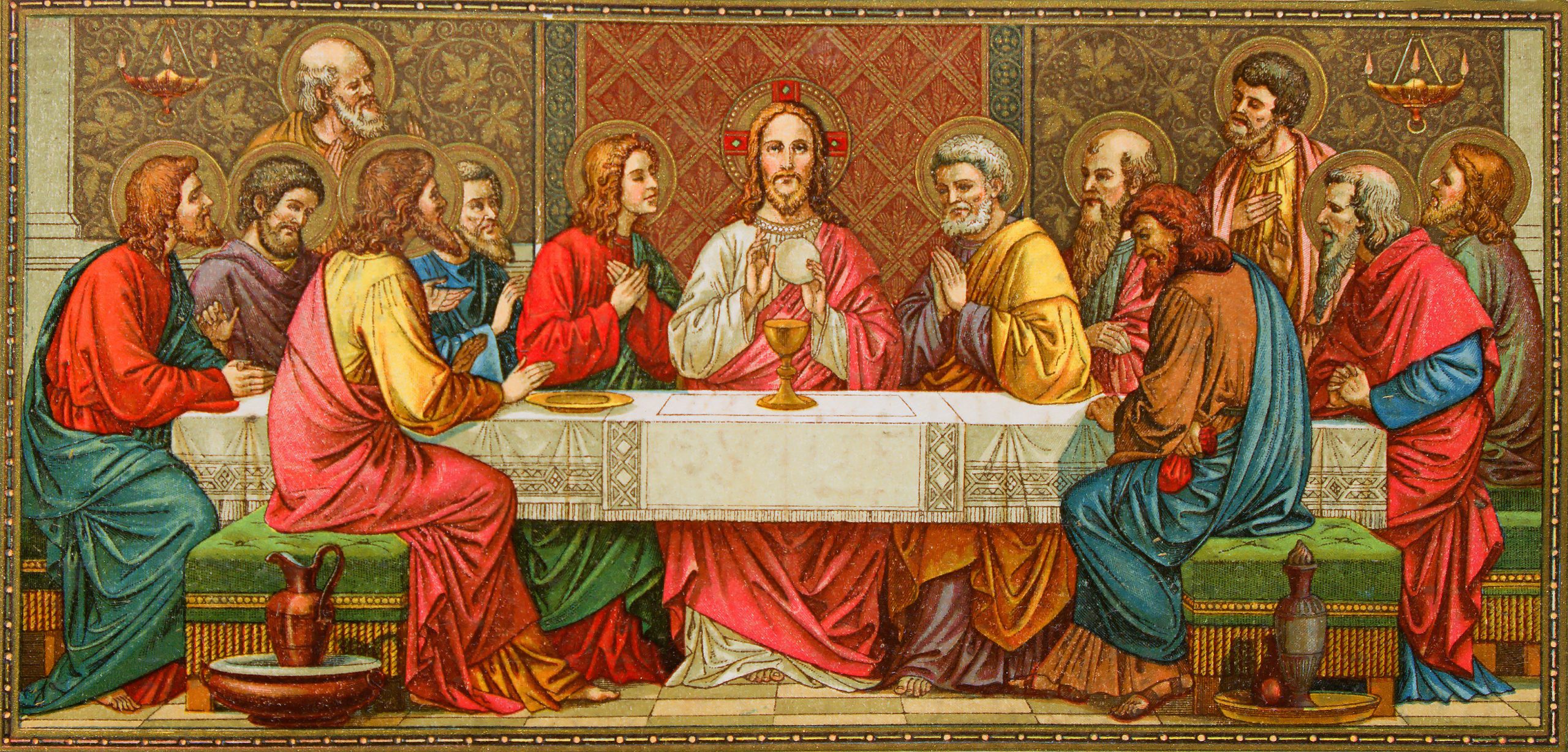
Question:
How can I explain the real presence of Jesus in the Eucharist when people ask about it?
Answer:
Over the course of the last several months, we have been looking at the scriptural basis for the real presence of Jesus in the Eucharist. This month and next we are going to conclude this series by looking once more at the Lord’s Supper: the Passover meal Jesus celebrated with his apostles the night before he died. Here, we are going to focus on the relationship between the Last Supper and the Paschal Mystery: Jesus’ Passion, Death, Resurrection and Ascension.
We’ve already seen that in the Mass, these saving events are re-presented to us, that at the Mass, we are present at the Passion, at the foot of the cross, at the tomb on Easter morning and at the Ascension. But as we will see, in the very manner in which Jesus celebrated the Last Supper, those saving events—particularly the sacrifice of Calvary—were included in the Last Supper itself. Jesus did not finish the Last Supper in the upper room, but upon the gibbet of the cross itself.
Now, there’s an important note that needs to be made here. This final biblical root is more speculative than the others we’ve looked at. That is, there is more connecting of the dots that happens in this root than with the others; the conclusions aren’t quite as easily seen as with the other biblical roots we’ve examined. The Church doesn’t formally teach any of what we’ll be looking at here. Nonetheless, the connections and conclusions are there, and they follow from what we do explicitly know. I offer this note to be clear that while I believe that what I’m going to present is true and follows from Church teaching, it is not formally or explicitly taught by the Church.
Recall that the Passover was both a sacrifice and a meal. By Jesus’ time, the meal had a well-established order, with specific rules and regulations, steps and stages. In particular, the Passover meal was structured around four cups of wine. Jewish tradition was very clear on this: the form of the Passover required four cups of wine to drink. Let’s look at this structure more closely as we find it in the ancient Jewish sources.
First, the Passover meal was preceded by several hours of fasting, beginning at the time of the evening sacrifice, around 3 p.m. The meal itself would begin just before nightfall, with the father gathering his household to recline at a large table, symbolizing the freedom God had given them in the Exodus.
As the Passover meal began, the first cup of wine was poured and mingled with some water, and the father began the meal by saying this blessing over the first cup: “Blessed are you, O Lord our God, King of the universe, who creates the fruit of the vine.” These words might sound familiar to you, as they are the basis for the words the priest prays over the chalice as the altar is being prepared during the Mass.
Then the food was brought to the table and laid before the father, who would begin the “appetizer” course of the meal by taking the bitter herbs, dipping them in a sauce, eating them and then repeating this for the others. Once this was complete, the “opening rites” were concluded, but the meal proper had not yet begun.
The next stage entailed the mixing of a second cup of wine, but it was not drunk. At this point, the father proclaimed what God had done for Israel in the Exodus as found in Deuteronomy 26:5-11. He would then explain the meaning of the Passover meal: the lamb, the bread, the bitter herbs. It was in this explanation that the events of the Exodus became present to the participants in the meal: the past and present meanings of the Exodus merge into one. The family would then sing Psalms 113-114 to give thanks for what God had done for them.
The meal proper would then begin with the mixing of a third cup and the actual eating of the Passover lamb and unleavened bread. The bread was blessed with this prayer: “Blessed are you, Lord God, who brings forth bread from the earth.” Once again, we find here the historical origins of the words the priest prays over the eucharistic host during the preparation of the altar at Mass.
At this point, a small morsel of bread was dipped in the bowl of sauce and eaten (recall that Judas dipped a morsel in the dish before he left the Last Supper). Then the lamb and bread were eaten. After the meal was finished, the father said another blessing over the third cup, and with its drinking, the third stage was complete.
The final stage of the Passover meal consisted of two main parts. It began with the singing of Psalms 115-118. After the signing of Psalm 118, the fourth cup of wine was drunk. And with that, the Passover meal was complete.
This is the basic ritual of the Passover meal as practiced by the Jewish people in Jesus’ day and as he would’ve practiced it throughout his life, until the Last Supper. On that night, he would make a monumental shift in the Passover meal, transforming it into the sacrificial meal of the New Covenant. We’ll see how he did that next month.

Be sure to check out the additional resources at sfcatholic.org/answer. If you have a question you need an answer to, email cbassett@sfcatholic.org.
Chris Burgwald holds a doctorate in theology and is the director of discipleship formation for the Diocese of Sioux Falls.


